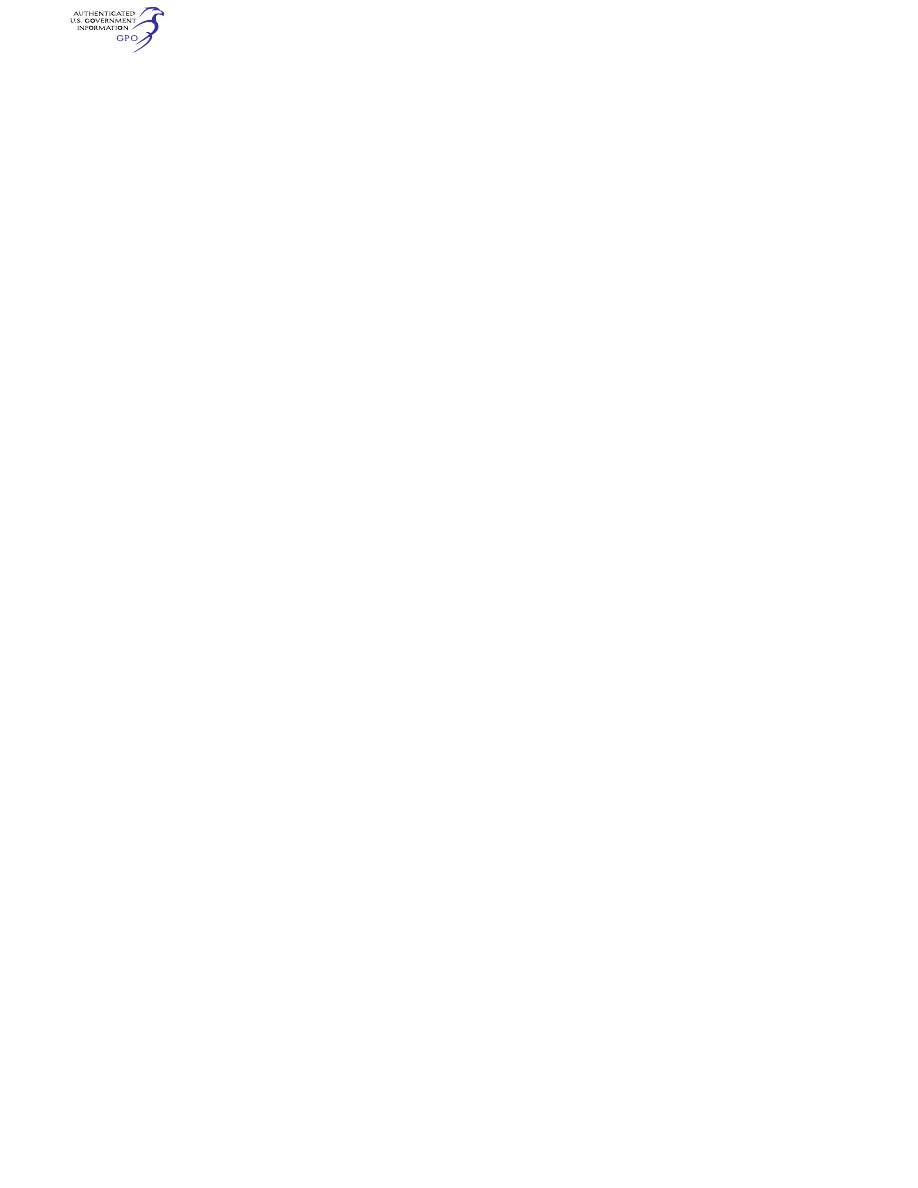
735
Federal Aviation Administration, DOT
§ 33.91
starts may be made at any time, in-
cluding the period of endurance test-
ing.
[Doc. No. 3025, 29 FR 7453, June 10, 1964, as
amended by Amdt. 33–3, 32 FR 3737, Mar. 4,
1967; Amdt. 33–6, 39 FR 35468, Oct. 1, 1974;
Amdt. 33–10, 49 FR 6853, Feb. 23, 1984; Amdt.
33–12, 53 FR 34220, Sept. 2, 1988; Amdt. 33–18,
61 FR 31328, June 19, 1996; Amdt. 33–25, 73 FR
48123, Aug. 18, 2008; Amdt. 33–30, 74 FR 45311,
Sept. 2, 2009; Amdt. 33–32, 77 FR 22187, Apr.
13, 2012]
§ 33.88
Engine overtemperature test.
(a) Each engine must run for 5 min-
utes at maximum permissible rpm with
the gas temperature at least 75
°
F (42
°
C) higher than the maximum rating’s
steady-state operating limit, excluding
maximum values of rpm and gas tem-
perature associated with the 30-second
OEI and 2-minute OEI ratings. Fol-
lowing this run, the turbine assembly
must be within serviceable limits.
(b) In addition to the test require-
ments in paragraph (a) of this section,
each engine for which 30-second OEI
and 2-minute OEI ratings are desired,
that incorporates a means for auto-
matic temperature control within its
operating limitations in accordance
with § 33.28(k), must run for a period of
4 minutes at the maximum power-on
rpm with the gas temperature at least
35
°
F (19
°
C) higher than the maximum
operating limit at 30-second OEI rat-
ing. Following this run, the turbine as-
sembly may exhibit distress beyond the
limits for an overtemperature condi-
tion provided the engine is shown by
analysis or test, as found necessary by
the FAA, to maintain the integrity of
the turbine assembly.
(c) A separate test vehicle may be
used for each test condition.
[Doc. No. 26019, 61 FR 31329, June 19, 1996, as
amended by Amdt. 33–25, 73 FR 48124, Aug. 18,
2008; Amdt. 33–26, 73 FR 48285, Aug. 19, 2008]
§ 33.89
Operation test.
(a) The operation test must include
testing found necessary by the Admin-
istrator to demonstrate—
(1) Starting, idling, acceleration,
overspeeding, ignition, functioning of
the propeller (if the engine is des-
ignated to operate with a propeller);
(2) Compliance with the engine re-
sponse requirements of § 33.73; and
(3) The minimum power or thrust re-
sponse time to 95 percent rated takeoff
power or thrust, from power lever posi-
tions representative of minimum idle
and of minimum flight idle, starting
from stabilized idle operation, under
the following engine load conditions:
(i) No bleed air and power extraction
for aircraft use.
(ii) Maximum allowable bleed air and
power extraction for aircraft use.
(iii) An intermediate value for bleed
air and power extraction representa-
tive of that which might be used as a
maximum for aircraft during approach
to a landing.
(4) If testing facilities are not avail-
able, the determination of power ex-
traction required in paragraph (a)(3)(ii)
and (iii) of this section may be accom-
plished through appropriate analytical
means.
(b) The operation test must include
all testing found necessary by the Ad-
ministrator to demonstrate that the
engine has safe operating characteris-
tics throughout its specified operating
envelope.
[Amdt. 33–4, 36 FR 5493, Mar. 24, 1971, as
amended by Amdt. 33–6, 39 FR 35469, Oct. 1,
1974; Amdt. 33–10, 49 FR 6853, Feb. 23, 1984]
§ 33.90
Initial maintenance inspection
test.
Each applicant, except an applicant
for an engine being type certificated
through amendment of an existing type
certificate or through supplemental
type certification procedures, must
complete one of the following tests on
an engine that substantially conforms
to the type design to establish when
the initial maintenance inspection is
required:
(a) An approved engine test that sim-
ulates the conditions in which the en-
gine is expected to operate in service,
including typical start-stop cycles.
(b) An approved engine test con-
ducted in accordance with § 33.201 (c)
through (f).
[Doc. No. FAA–2002–6717, 72 FR 1877, Jan. 16,
2007]
§ 33.91
Engine system and component
tests.
(a) For those systems or components
that cannot be adequately substan-
tiated in accordance with endurance
VerDate Sep<11>2014
09:06 Jun 28, 2024
Jkt 262046
PO 00000
Frm 00745
Fmt 8010
Sfmt 8010
Y:\SGML\262046.XXX
262046
jspears on DSK121TN23PROD with CFR
